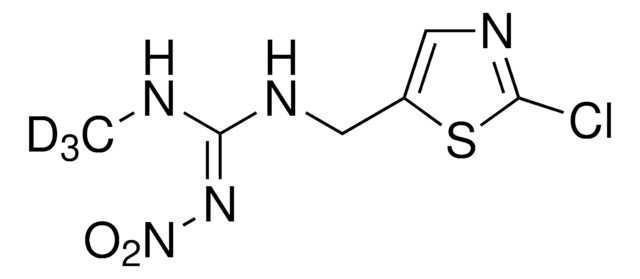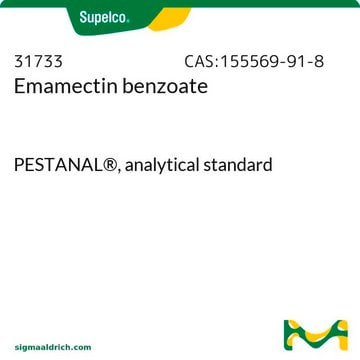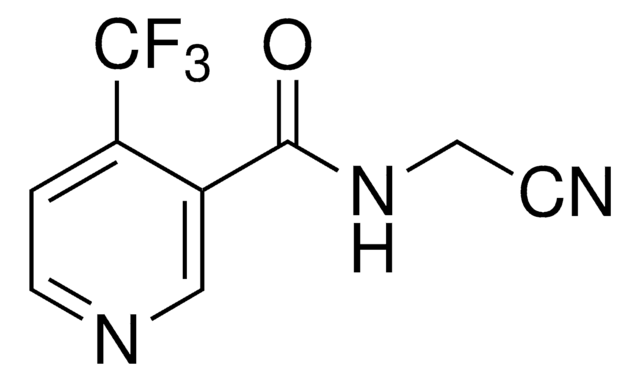32499
Dinotefuran
PESTANAL®, analytical standard
Synonym(e):
(RS)-N-Methyl-N′-nitro-N″-[(tetrahydro-3-furanyl)-methyl]-guanidin
About This Item
Empfohlene Produkte
Qualität
analytical standard
Qualitätsniveau
Produktlinie
PESTANAL®
Haltbarkeit
limited shelf life, expiry date on the label
Methode(n)
HPLC: suitable
gas chromatography (GC): suitable
Anwendung(en)
agriculture
environmental
Format
neat
SMILES String
CN\C(N[N+]([O-])=O)=N/CC1CCOC1
InChI
1S/C7H14N4O3/c1-8-7(10-11(12)13)9-4-6-2-3-14-5-6/h6H,2-5H2,1H3,(H2,8,9,10)
InChIKey
YKBZOVFACRVRJN-UHFFFAOYSA-N
Suchen Sie nach ähnlichen Produkten? Aufrufen Leitfaden zum Produktvergleich
Verwandte Kategorien
Allgemeine Beschreibung
Anwendung
Rechtliche Hinweise
Signalwort
Warning
H-Sätze
Gefahreneinstufungen
Eye Irrit. 2
Lagerklassenschlüssel
11 - Combustible Solids
WGK
WGK 3
Flammpunkt (°F)
Not applicable
Flammpunkt (°C)
Not applicable
Choose from one of the most recent versions:
Besitzen Sie dieses Produkt bereits?
In der Dokumentenbibliothek finden Sie die Dokumentation zu den Produkten, die Sie kürzlich erworben haben.
Kunden haben sich ebenfalls angesehen
Protokolle
Learn more about Neonicotinoids - active substances used in plant protection products to control harmful insects.
Analysis of banned neonicotinoid insecticides from dandelion blossoms using QuEChERS and LC-MS.
Unser Team von Wissenschaftlern verfügt über Erfahrung in allen Forschungsbereichen einschließlich Life Science, Materialwissenschaften, chemischer Synthese, Chromatographie, Analytik und vielen mehr..
Setzen Sie sich mit dem technischen Dienst in Verbindung.















